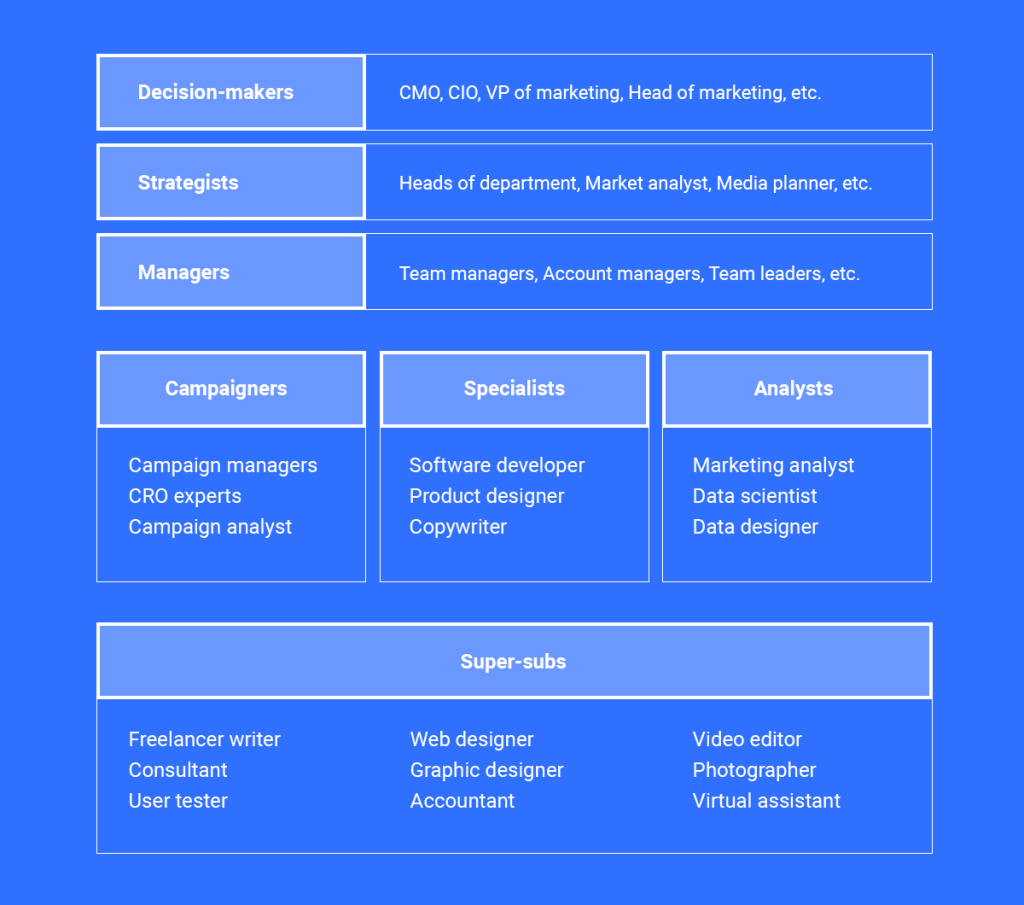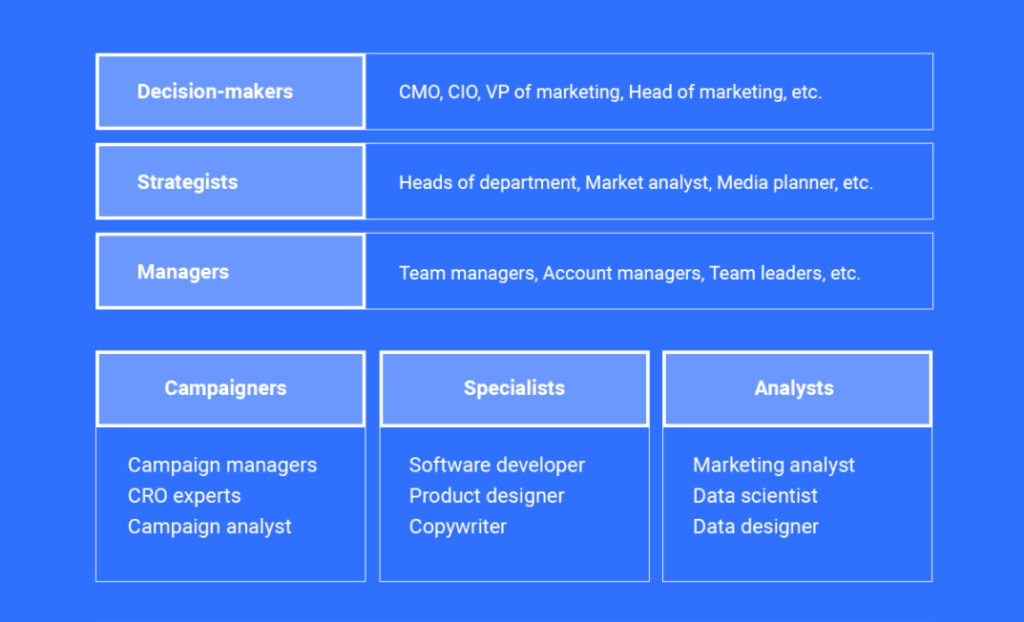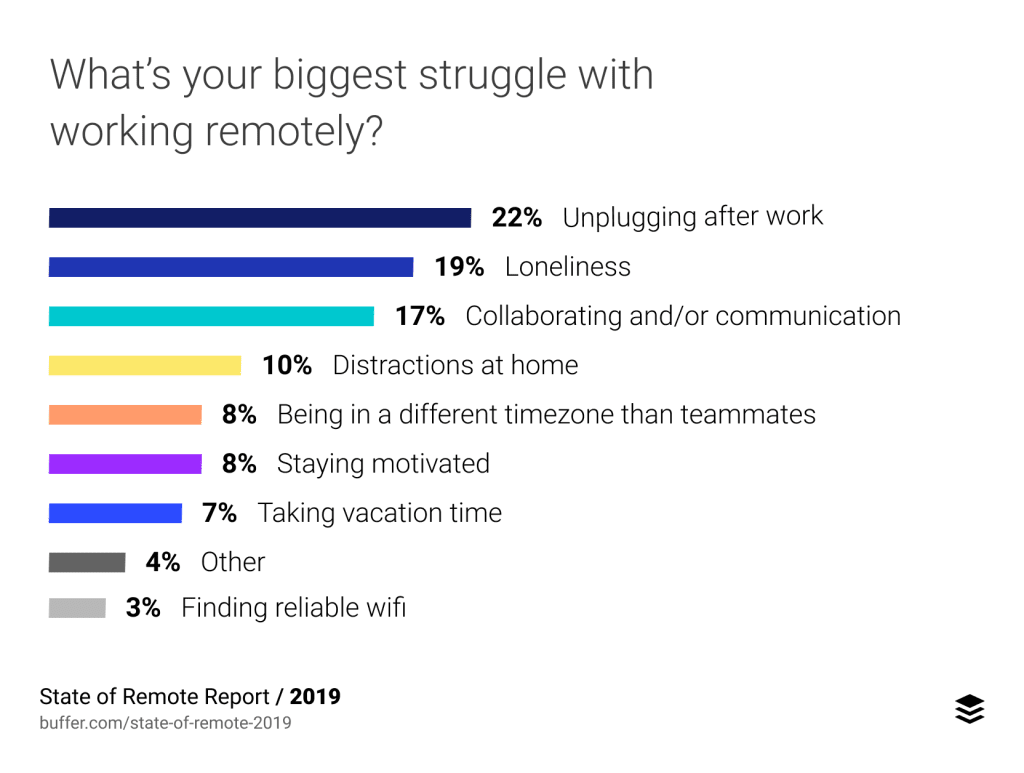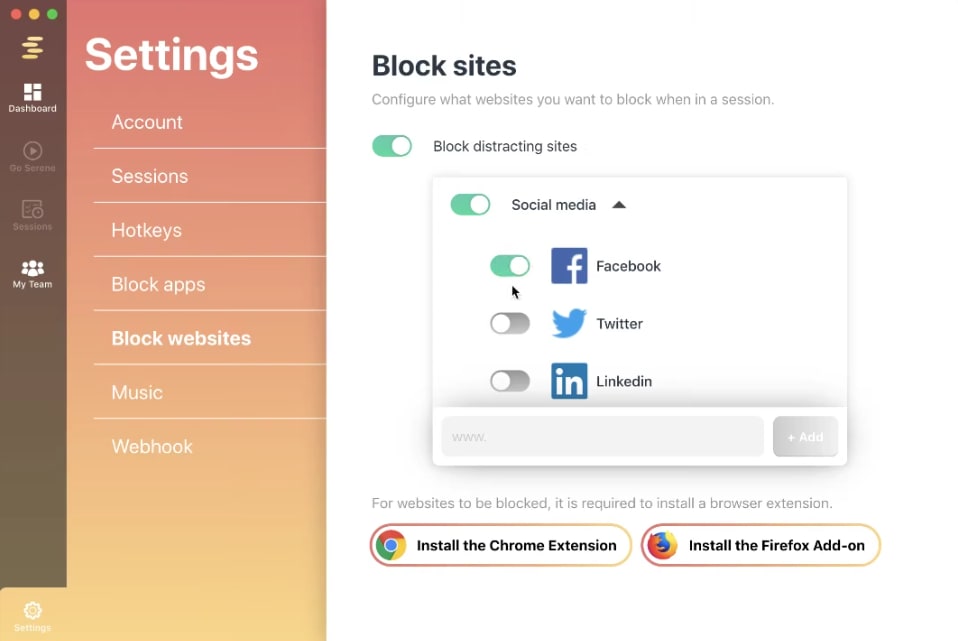Even the most successful marketing teams can feel like they’re always playing catch-up. Consumer habits are constantly changing while evolving technology fuels further change – not only in the habits of your target customers but also the channels, tools and strategies at your disposal.
We talk about concepts like agility and adaptation in marketing all the time and the success of teams often comes down to reacting to changes with speed and insight.
Whether it’s spotting new opportunities, reacting to emerging trends or innovating new ways to use existing channels, you need a team that’s able to maintain consistent results and adapt to new changes.
The anatomy of a successful marketing team
Successful marketing teams become more dynamic every year as technology advances and new trends reshape the customer journey.
It wasn’t that long ago that the mobile web didn’t even exist and social media marketing was in its infancy. Now, we have an ever-growing list of channels and new technologies like voice search and augmented reality creating introducing new ways for brands to engage with prospects.
The exact structure of your marketing team will vary on the nature and size of your business. For example, major corporations may have a vice president of marketing and/or chief marketing officer (CMO) while smaller businesses may have a head of marketing leading the department.
If we try to break down the differences between roles like CMO and VP of marketing for every business type, this article will never end. So, instead, let’s take a step back and look at the broader structure of every successful marketing team.
Broadly speaking, there are seven tiers to a successful marketing team and these can be filled with a variety of roles, depending on the size of your team and its objectives:
- Decision-makers: Top-level marketing roles, including the people with authority to sign off campaigns and authorise marketing spend.
- Strategists: These are the people in charge of creating key strategies and presenting them to the decision-makers for approval.
- Managers: The people who manage individual departments/teams (e.g.: SEO, social media, etc.) and accounts for clients.
- Campaigners: Responsible for managing individual marketing campaigns to ensure goals are being hit and maximise performance.
- Specialists: The experts who put the substance into your marketing strategies and campaigns – designers, developers, writers and more.
- Analysts: The data linguists who track performance and find new opportunities.
- The super-subs: The freelancers and contractors who cover the gaps of your in-house team.
Here’s a graphic showing the hierarchy of this team structure with some example roles you might have in each tier, depending on the size of your business.

At the top of this marketing team structure, you have the decision-makers who have the power to approve strategies and campaigns but, crucially, have the authority to approve marketing spend.
For example, if you need to hire six new freelance writers for an upcoming content marketing campaign (at a cost of $50/hr per writer), this is where approval comes from.
Essentially, they are the top-level marketers who dictate the movement of your entire team (or lack of).
Speaking of freelancers, the “super-subs” section in the graphic above is one of the most important parts of your marketing team. These are the specialists you can call upon, as and when you need, providing a great deal of flexibility. If you’re short of a web designer for any reason, you can call in a freelancer to fill in. Or, if you need some professional photography from time-to-time, you can rely on freelancers instead of hiring someone full-time.
More importantly, if you see a new opportunity (e.g.: product review videos are performing especially well), you can hire a freelance video editor to adapt your content marketing strategy and seize the opportunity while it’s hot.
If the opportunity turns out to have longevity, you can simply continue working with the freelancer or hire them on a full-term basis.
These super-subs provide the flexibility modern marketing teams need to respond to emerging trends, bring in new talent as it’s needed and change the size of individual teams quickly, without risk.
Agility: The key trait every marketing team needs
As explained in this article on the monday.com blog, the best structure for highly effective marketing teams is an agile one.
“Your marketing team’s focus will sometimes need to quickly shift from month to month. They might spend one month conducting interviews, research, and analysis for a shift in messaging, then need to pivot to publishing daily written and visual content for the messaging’s launch. They might quickly shift from one marketing channel to another, requiring adjustments in both strategy and collateral.”
If you’re going to deal with these monthly shifts, you have to have a team that’s ready to react to changes, as they happen. You can’t wait until next week to start putting plans in action because you’ll already be so far behind more agile competitors that you’ll be chasing scraps by the time you catch up.
At the same time, industry changes and the evolution of technology mean that the structure of marketing teams is also constantly adapting. This phenomenon is highlighted in another article published by Simple, entitled The Changing Structure of Marketing Departments in the Age of Disruption.
“New influences on the marketing team structure are emerging. In some cases, marketing technologists are being appointed to bridge the gap between marketing and IT. In many instances, a chief digital officer is driving digital innovation and change. In others, the customer experience is paramount, with marketing reporting to a chief customer or customer experience officer. In still others, the chief marketing officer takes in all those roles.”
For example, in today’s data-driven environment, marketing teams need data scientists not only capable of dealing with data themselves but also building AI and machine learning algorithms to manage and process data on a wider scale.
Only a few years ago, this kind of technology was reserved for the likes of Google and Silicon Valley tech giants but, now, any business with the right tools and know-how can leverage big data.
So what does agile really mean when we’re talking about a marketing team?
The answer is actually quite simple: speed. An agile team is ready to respond to changes instantaneously and capitalise on new opportunities before everyone else is clambering for their share. It could be reacting to new industry trends, adopting new technology early or innovating new strategies that give you the edge.
Here at Venture Harbour, this has been crucial to our most successful products. We started using multi-step forms while everyone else was over-optimising traditional form designs. We then built Leadformly to help other businesses create multi-step forms without writing any code and, now, multi-step designs are the norm.
Since then, we’ve innovated our own productivity platform called Serene that helps remote workers remain focused. By being an agile team ourselves we experienced the challenges of working remotely and actively moved to solve these problems.
And, now, we’re releasing TrueNorth, which is a growth marketing tool to help teams put marketing strategies in action faster.
Without having an agile marketing team here at Venture Harbour, none of these products would have made it to market. Or, if they had, they wouldn’t have been as successful because other teams would have already come up with the same ideas and put their own solutions forward.
Agility is all about speed and there are two key components to this:
- Identifying opportunities: Whether it’s a marketing strategy, industry trend or product idea, being first to identify new opportunities is crucial.
- Deployment: Seeing the opportunity and coming up with a killer idea means nothing if you’re unable to deploy it quickly.
For agile marketing teams, deployment means sending campaigns live while the opportunity is greatest in order to maximise the positive impact. Once again, it all comes down to speed so that you can react first and this requires you to remove barriers standing in the way of deployment – for example, delays in getting campaigns approved.
How to build an agile marketing team
The key to building an agile marketing team brings us back to the structure we looked at earlier. The top two tiers are your full-time, permanent team members who take care of the most important, day-to-day marketing actions.
In the top tier, you have the decision-makers, strategists and managers who are in charge of ensuring targets are hit. In the second tier, you have the people running your campaigns, the specialists producing the goods you need and the analysts in charge of tracking performance.

The second tier of your team makes the magic happen while the top tier steers them in the right direction. The other crucial role of the top tier is to create an environment in which the second tier can operate in the most efficient manner.
Agility starts from the top
The leaders of your marketing team need to make sure everyone has the tools they need to get the job done. They also need to remove productivity barriers and identify issues that routinely get in the way of progress, preventing your team from being as agile as it could.
A common mistake marketing leaders fall into is focusing all of their efforts on managing the second tier of a team when they should also be looking at themselves. The best marketing teams are led by decision-makers, strategists and managers who access their own processes and constantly look for improvements.
For example, how can decision-makers with the authority to approve marketing spend and reduce the time it takes for purchases to be signed off? How can the strategists improve their data processes to deliver insights faster and greater accuracy? Or how can team managers get campaign ideas out of the conceptual stage and ready for approval sooner?
Marketing agility needs to start from the top and this requires some self-reflection from leaders.
Bringing in help from outside
With your core team set up, you can maximise agility by adding a third tier of “super-subs” in the form of freelancers and contractors.

These are the professionals you don’t need on a permanent basis who provide key services, as and when you need them. So, let’s say you have a new content marketing campaign to get up and running and need a bunch of new content created over the next two months.
You can call in the writers, designers, video editors and whoever else you need to get this campaign running. When the work is done, your super-subs go about their business and you can call on them again later, as needed.
This gives you the flexibility you need to react to new opportunities and deploy campaigns as soon as possible – or at the ideal moment.
Another great way of using your third tier of super-subs is to trial new strategies without committing to full-time staff. For example, your strategy team may identify product review videos as an opportunity for lead generation.
The data may suggest that you need to produce regular video reviews to increase traffic and capture more leads on a monthly basis. But, instead of setting up a video production team, you can bring in freelancers to put this data to the test and check that your new video marketing strategy has genuine potential.
If all goes well and you need a full-time team of product reviewers, you can always bring these freelancers into your core team. But there’s no pressure to do so and your team of super-subs gives you complete flexibility to test and scale strategies.
How to manage an agile marketing team
We’ve explored the benefits of an agile marketing team and the structure required to establish one. However, it’s also important to understand that managing an agile team requires a different approach to the more static, traditional methodology.
Essentially, you have to adopt an agile management philosophy.
There are six key areas you’ll need to address with managing an agile marketing team:
- Team culture: You have to create an agile culture within your team, starting from the top.
- Data-driven mentality: Data science is the brain of an effective marketing team, revealing opportunities, risks and targets – as well as proving your successes.
- Remote working: Even if your core team works in-house, you need to master remote working to get the best out of freelancers and maximise agility.
- Collaboration: The more agile you become, the more important and challenging collaboration is – especially when core team members and freelancers need to work together.
- Automation: To maximise the efficiency of an agile team, you should automate every task that doesn’t need human input.
- Testing: As with any data-driven philosophy, you need to test and verify new ideas while constantly optimising existing practises for the best performance.
Above all, if you’re going to take this agile approach to team structure, you have to install a working culture that supports it, from top to bottom. Remote working and digital collaboration can be tricky to implement, especially if your core team is working in-house.
You may decide to adopt a more agile culture within the office and allow people to work from home more often. Or you may have been forced to adopt remote working by a certain global pandemic.
Either way, you have to adapt the way your team leaders think about day-to-day working.
One challenge you’ll quickly come across is productivity when your team is constantly connected. While tools like Slack are excellent communication tools, they can also be infuriatingly disruptive when notifications are constantly sounding off.
Luckily, there are tools you can use to cancel Slack interruptions while keeping all of the benefits of the platform – and we’ll explore this more in the next section.
Another challenge you’ll face is switching off after work, which is listed as the biggest struggle of working remotely.

As your team becomes more agile and working hours become more flexible, it’s difficult for team members to feel like they’re ever not working. Stress, fatigue and all kinds of morale killers can quickly set in so it’s crucial that the key figures in your business take steps to mitigate this problem.
Either set specific working hours or allow remote workers to set their own so that it’s known when they’re available and respected when they’re not.
We address this problem in more detail and many of the other challenges you’ll face with modern marketing teams in our 10 Common Remote Work Challenges (+ Solutions) article.
While the article is specific to remote working, agile marketing teams will experience all of the same challenges, to some extent:
Challenges for remote teams:
- Managing projects
- Remote collaboration
- Tracking tasks and productivity
- Working from different locations, time zones, etc.
- Dealing with language and cultural differences
- Building/maintaining trust
Challenges for remote workers:
- Maximising productivity
- Overcoming distractions
- Staying motivated
- Unplugging after work
We’ve also published a guide to managing remote teams, which is filled with info that will help you get the best out of team members – both in-house and elsewhere.
If you’re new to remote working, it will take time to adapt but this is simply another example of why agile marketing teams are more successful. As long as the experimental culture starts from the top, you’ll test and find the right processes that work for your team and adapt to new challenges, as they emerge.
Give your team the tools they need
At the heart of every marketing team is the tech stack that helps them complete tasks in the most efficient way. In general, the more agile a team is, the more tools they need to maintain flexibility while also maximising productivity.
One of the key barriers standing in the way of marketing team performance is the time it takes to launch new campaigns. Getting strategies out of the conceptual stage and launched quickly can make the difference between seizing an opportunity first and playing catch-up along with everyone else.
We’ve run into this problem plenty here at Venture Harbour and felt the frustration of campaign ideas not being materialised quickly enough. As we often do, we built our own tool to solve this problem – a free Slack app called SignOff that allows us to get campaign ideas signed off and ready to send live much faster.

By closing the gap between our strategists and our decision-makers, campaigns are now signed off sooner and our campaign managers can get things moving without delay.
We’ve also published an article looking at the 30 Best Slack Apps, Integrations & Bots to Try if you want to turn Slack into a more powerful productivity tool.
We also touched on the distraction communication tools like Slack can become – a common issue raised by digital teams.
A problem we ran into quite quickly here at Venture Harbour was realising that the more tools we used, the more distracted we became. While most of the tools allowed us to complete individual tasks faster, the constant notifications and distractions made us less productive overall.
So, as we usually do, we built our own tool to solve this problem for us.

We talked about Serene a little earlier and this the tool that tames our other tools and stops them killing our productivity. Its built-in app and website blocker stop unwanted distractions and you can set 20-90 minute power sessions to crack on with tasks, distraction-free.
You can even integrate with Slack, using this technique, to automatically update your Slack status when you’re busy.
The point is, giving your team the tools they need is crucial but you don’t want to overload yourselves with tech. Constantly switching between apps or dealing with notifications are major productivity killers so automate mundane tasks with a tool like Zapier to spend less time moving between different apps.
Also, take a look at our 19 Productivity Hacks to Get More Done in 2020 article for more ideas on how to maximise team efficiency.
Automation has been one of our biggest assets and we’ve previously listed 53 business automation tools that skyrocketed our growth by 330%. Knowing which tools to use (and which ones not to use) can require time and patience – it took us years to find the right CRM platform for us!
With software prices being so competitive now and plenty of free tools on the market, it’s worth investing some time to test out some options and build the tech stack that truly meets your needs.
Put the agile in your marketing team
The key theme throughout this article is that modern marketing teams have to be agile and ready to adapt quickly. The team structure we’ve looked at today gives you the basis you need to scale your team, as and when necessary, so that you’ve always got the resources at hand to meet your objectives as they change.
With this team structure, an agile working culture and the right set of tools, your team will be ready to respond to new opportunities as they emerge.




